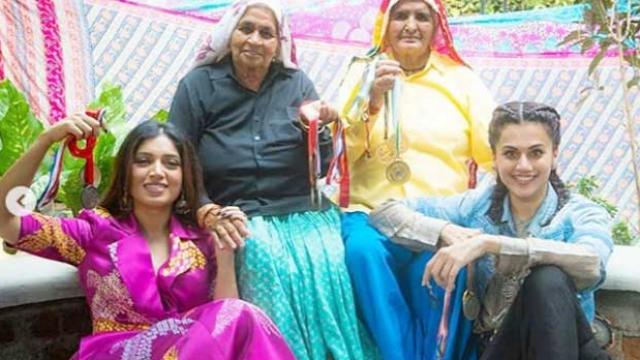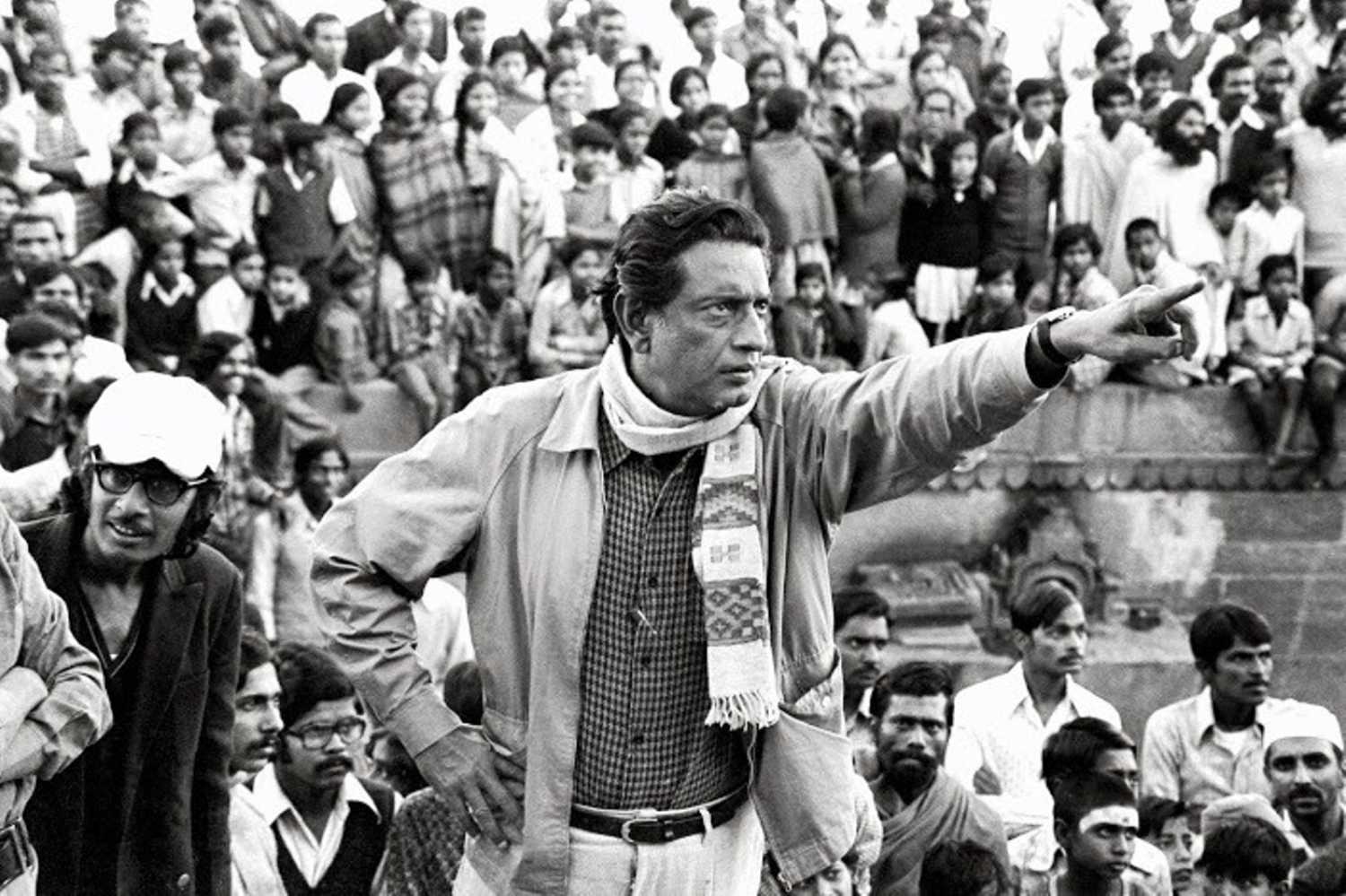‘Saand Ki Aankh’ is primarily a film that traces the journeys of two Jat women in their sixties who take up sharpshooting as a newly found passion. The director of the film Tushar Hiranandani makes a clear message through the film about how women from a conservative social order can fight structures of oppression and make a life beyond these. The story of the film is set in the Johri village of Uttar Pradesh during the year 1999.
The plot moves around three wives of the Tomar men who have to lead their lives behind the veil.
They are identified by the men based primarily on the colours of their veils. Bimla (Bhumi Pednekar)the eldest is veiled in red and the middle one is blue. Thus when the youngest wife (Taapsee Pannu)first comes into the household, she is required to choose the colour of her own veil.
The director has filmed the scene of colour coding in the film using a light hand. The subtle message here is that the film is about these women who have to follow the dictates of a patriarchal order and have no choices of their own.
Patriarchy, chauvinism and discrimination are endemic in this feudal family. The men are shown sitting around the house smoking hookah. The men look at the women as labour force during the day and sexual objects during the night.
But the two women characters try to envision a world where they will be moving beyond this patriarchal order. Thus when a shooting range is made in the village, Chandro envisages a ticket for her beloved granddaughter and Prakashi sees it as a way for her daughter Seema to break free from the patriarchal order.
While paving way for their granddaughter and daughter, the two women discover their own hidden talent for sharp shooting.
But they can only do so clandestinely. The patriarch of the family Rattan Singh Tomar(Prakash Jha) rules over his family quite sternly so it takes all their creativity from the women to discover innovative ways and excuses to escape from their village and compete across India.
Pannu and Pednekar do a great job and play their characters quite convincingly. What slows down the narrative is the time given to women’s own personal space and to depicting their own life-world in the village. There is also a troublesome scene of a soiree where the women from Johri village are portrayed as fresh off the boat simpletons dining finger bowl water and chasing flickering lights that were being cast by a mirror ball.
What cannot be denied is that the relatively young actresses have played the role of older women protagonists while the roles played by the men appear more convincing because they have been played by older men.
Out of the innumerable biopics that we have seen in recent months, ‘Saand Ki Aankh’ stands out because it’s not just celebrating the individual success stories of two women but also depicts the struggles, failures and anxieties that surround their lives.
What makes the film inspiring is that both these women in their sixties didn’t just take up sharpshooting to fulfil their own passion but instead encouraged generations of younger women to break free from the chains of suppression and patriarchy .
The positive outcome is that gradually this also helps in changing the attitude of the men too.Overall, this is a film that can certainly be enjoyed by the young and old alike for its positivity and hope.














